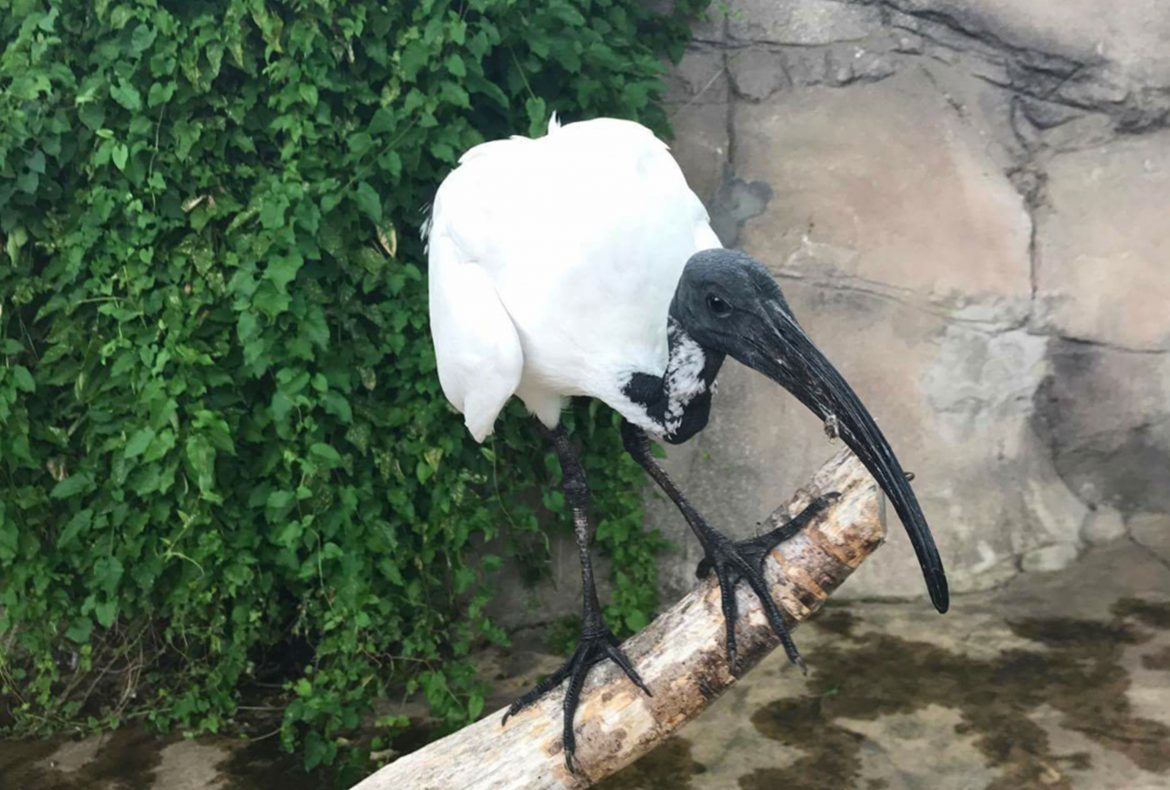Discover The Sacred Ibis

This week we will be letting you know a bit more about one of our more ‘Sacred’ residents here at the Zoo. As part of the Bird Show and also our Aviary in Lost River we have a number of Sacred Ibis. Ibis are wading birds which means they have long legs which allow them to ‘wade’ through shallow water and mud. They get their ‘Sacred’ name because in Egypt the Ibis represented the god Thoth, god of wisdom, knowledge and writing, and was considered the herald of the flood. However sadly, it is now extinct throughout Egypt because of gradual acidification through swamp drainage and land reclamation. They can still be found in other Northern African countries as well as zoos just like Flamingo Land.
African Sacred Ibis are wading birds that are black and white in colour. Their long legs allow them to wade through the water without getting their feathers wet. They also allow them to jump and take off quickly should they spot a predator. They have a long beak which curves downwards which also allows them to retrieve their food in amongst mud and shallow water. Local villagers appreciate them as they help to rid fish ponds of water snails that contained dangerous liver parasites.
They generally live in colonies which can reach up to 300 individuals. They can also share territory within trees and bushes with other species of bird such as spoonbills. Their habitat generally consists of freshwater wetlands, salt pans, dams, mangroves, rivers in open forested areas. When it comes to breeding both parents will attend to a clutch of 2-4 eggs for about 3 weeks. Once the eggs hatch they take turns feeding the nestlings. The young leave the nest at 14-21 days old but continue to be fed until they grow flight feathers at about 35- 48 days old. Unfortunately breeding success is generally very low, with an average of 0.01 young fledged per nest. This shows the importance of breeding them successfully in captivity.
Here we have Isis who is one of the birds in our show. She can also be flown and fed by members of the public as part of our Bird Encounters.


